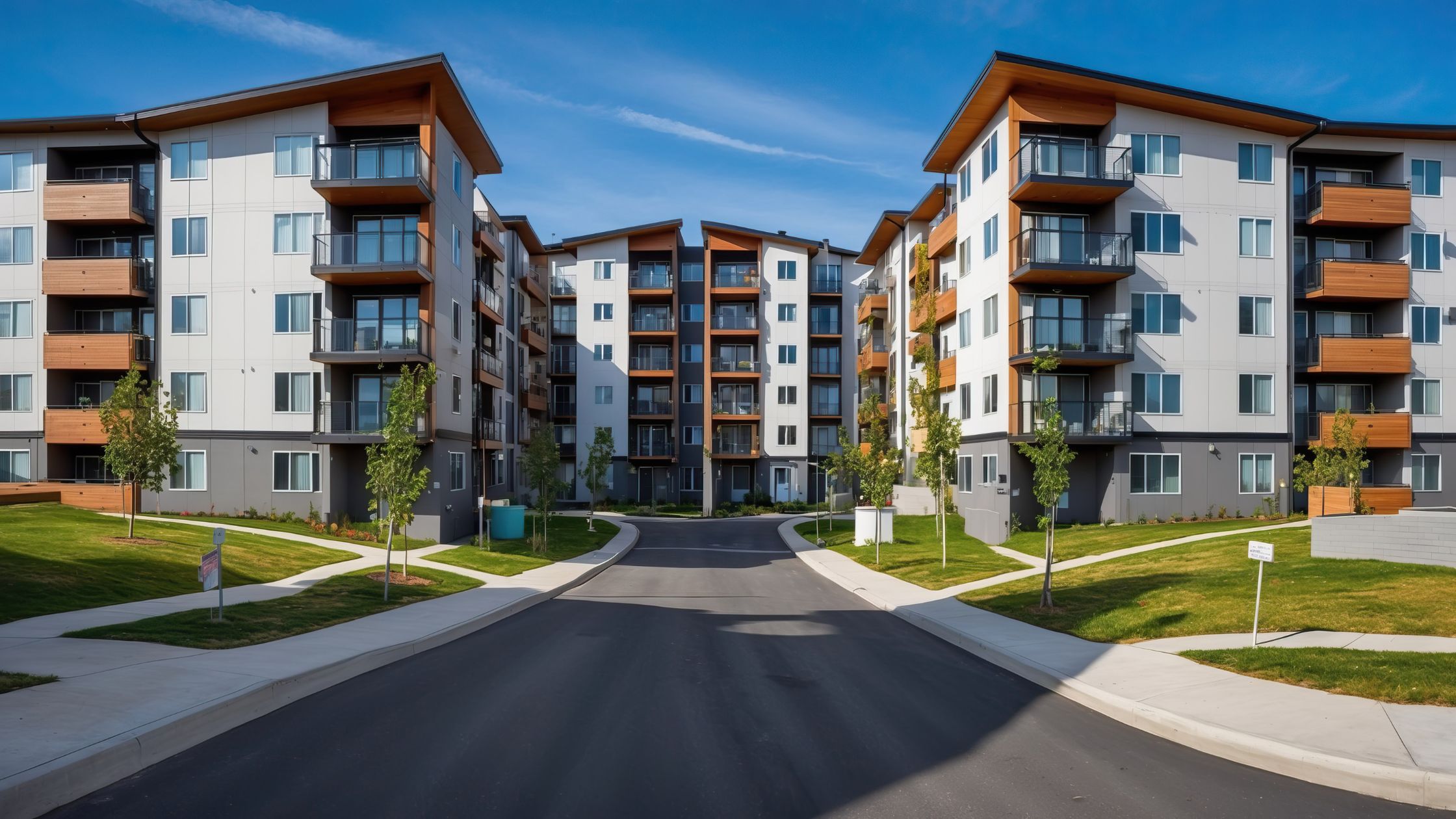Key takeaway
If you’re a multifamily investor, loss of income insurance is a crucial financial safeguard you need to have in your portfolio. This type of insurance ensures you can sustain your mortgage payments and manage property costs even when faced with unexpected setbacks. It provides security because it shields your cash flow and gives you time to bounce back from difficulties.
Introduction
Cash flows from multifamily properties might appear steady, but if you’re a multifamily investor, you know they’re more volatile than they seem. Loss of income insurance is vital if you want to maintain the profitability of your apartment buildings even under adverse conditions.
Multifamily apartments hum nicely during good times: units are filled, and rental income flows. But what if a disaster strikes — a fire, a storm, significant damage? What now?
These incidents can wipe out your stable income overnight and make it extremely tough to meet your obligations. Your previously stable income stream could suddenly dry up and render you unable to cover financial commitments such as employee salaries and routine maintenance costs — not to mention your mortgage on the property (if you have one).
Loss of income insurance helps investors like you withstand such financial storms and keep your finances healthy during tough times.
What is loss of income insurance for multifamily investors?
At its core, loss of income insurance kicks in when disasters or situations beyond your control force tenants out. Sometimes called business income or rental income insurance, it replaces your lost rent and keeps your financial gears moving.
But how does it work, and what triggers it? Keep reading to learn why this coverage is indispensable for protecting your multifamily investments.
What is the financial impact of lost rental income for multifamily investors?
Losing rental income hits hard for multifamily investors. It threatens your ability to pay bills and keep the lights on in your investment property and might even cause you to lose the building altogether.
After all, mortgage obligations don’t pause even if your income dips. The bank expects its payment, and if you can’t make timely mortgage payments, they may initiate foreclosure proceedings.
Operational costs keep coming even when you no longer receive substantial rental income. Utilities and maintenance fees only care if your multifamily units are complete. As you know, each day that units remain vacant translates to lost potential income that diminishes your overall profitability.
Suppose you have to use your reserve funds to cover ongoing expenses during periods of no rental income. In that case, you are depleting your financial buffer and exposing your portfolio to further risks.
There are non-financial repercussions, particularly how such situations can affect your standing with CRE lenders and business partners, such as passive investors (if you’re a syndicator). This may limit your ability to secure future financing and expand your multifamily business.
What scenarios may trigger a loss of income claim for multifamily investors?
- Natural disasters like hurricanes, floods, earthquakes, or severe storms can cause extensive property damage and make units unlivable, forcing tenants to relocate temporarily.
- Fires can start in one unit and rapidly spread to damage multiple units and compromise the building’s integrity. Such disasters often require lengthy repairs that displace tenants and, therefore, interrupt rental income.
- Prolonged repairs on significant structural issues or mold remediation can render units unrentable for many months.
- Long-lasting utility outages due to equipment failures or other problems can make your multifamily building unlivable and lead to a loss of income.
- Government-mandated directives (which are rare but can happen) may require you to temporarily close your property, which would result in lost rental income.
It’s uncomfortable even to imagine these scenarios. Still, as a multifamily investor, you must always be prepared with loss of income insurance to have the financial support necessary to manage these challenges effectively.
How does loss of income insurance for multifamily investors work?
This type of insurance typically covers you for up to 12 months (depending on your policy details). During this period, your insurer will pay the rent you would have collected if the disruptive event hadn’t occurred.
Insurers consider several factors, including your property’s rental history, occupancy rates, and current market conditions, to determine your lost rental income. They might also deduct any expenses you didn’t incur during the downtime (like utilities or maintenance).
When filing a loss of income insurance claim, be ready with all necessary documents, such as rental agreements, financial statements, and proof of the incident.
The insurance company will assess your claim, and if everything checks out, they’ll disburse funds to help you sustain your cash flow as you navigate the recovery phase.
What factors affect the loss of income insurance premiums for multifamily investors?
The cost of your loss of income insurance isn’t set in stone. Several factors influence the premiums you’ll pay, and getting a handle on these factors can guide you in choosing the right policy and effectively managing your property investment. In general:
- Expect higher premiums if your property is in a disaster-prone or high-crime area.
- Older buildings (or those in need of repairs) are deemed riskier by lenders, thus causing premiums to go up.
- Your property’s building materials can also affect its durability and, by extension, your insurance costs.
- Do you have amenities like pools or gyms? Such communal areas can increase liability risks and affect your premium.
- Opting for higher coverage limits and lower deductibles generally increases your premiums, whereas higher deductibles can reduce costs.
How do you choose the proper coverage limits for your loss of income insurance?
When you select the proper coverage limits, you can protect your multifamily investment. You want to avoid the pitfalls of under-insuring (which can leave you facing financial troubles) or over-insuring (which tightens your budget unnecessarily).
Here are tips on finding the optimal coverage limits:
- Start by calculating your average monthly rental income. Multiply this figure by the months you want coverage (usually between 12 and 18).
- Include your monthly mortgage payments and other fixed costs, such as property taxes and insurance premiums, in your calculations. This ensures that coverage can handle these expenses if your rental income stops.
- Consider the typical duration required to repair and re-rent units in your area. Remember to account for potential fluctuations in rental rates when deciding on the length of coverage needed.
- Choose a deductible that fits your budget and shows how much risk you will take. A higher deductible might lower your premiums but means more out-of-pocket expenses during a claim.
Why should I combine loss of income insurance with business continuity planning?
While loss of income insurance covers financial aspects, you also need a solid business continuity plan to keep disruptions at a minimum. Having this plan lets you handle unexpected events efficiently and expedite the claims process. Be sure to do the following:
- Outline your emergency response procedures—the immediate steps that need to be taken to ensure tenant safety, assess property damage, and begin the claims process.
- Set clear communication protocols with tenants, staff, and vendors to reduce confusion and keep all parties informed during disruptions.
- Establish connections with reliable vendors and contractors who can help you swiftly repair and restore services and speed up your property’s recovery.
- Keep detailed records of rental agreements, financial statements, and property conditions to facilitate the claims process and ensure total compensation.
Conclusion
As a multifamily investor, you must shield your investment from unexpected financial storms that sometimes happen despite meticulous planning.
Loss of income insurance is your first line of defense. This protection allows you to keep cash flowing, cover your bills, and preserve your multifamily assets.
Beyond insurance, it also makes sense to establish relationships with private commercial real estate lenders who can provide you with loans should you need an extra hand.
Private Capital Investors specializes in providing CRE financing solutions to support your property management endeavors.
Bridge financing—
We offer this temporary financing option to help multifamily investors bridge the gap between immediate funding needs and securing permanent financing.
Ideal for covering quick-turnaround acquisitions or renovations, bridge loans can also supplement the loss of income insurance payouts if you need money immediately because of an unexpected event.
Hard money loans—
We also offer these loans for projects that traditional banks may shy away from.
Because they are primarily based on the property’s value rather than your creditworthiness as a borrower, these loans are practical for investors who need a rapid financial buffer while waiting for insurance claims to be processed and disbursed.
Stated income loans –
Do you often fail to qualify for traditional loans because of your variable income streams? This loan lets you simply state your income on the application without extensive proof, so you can immediately secure funding.
This flexibility — working in tandem with your insurance coverage to stabilize your finances — can help you manage your cash flow better during periods of disrupted rental income.
Don’t hesitate to contact the Private Capital Investors team if you need CRE financing. Tell us about your situation, and we’ll tailor a solution for you.




